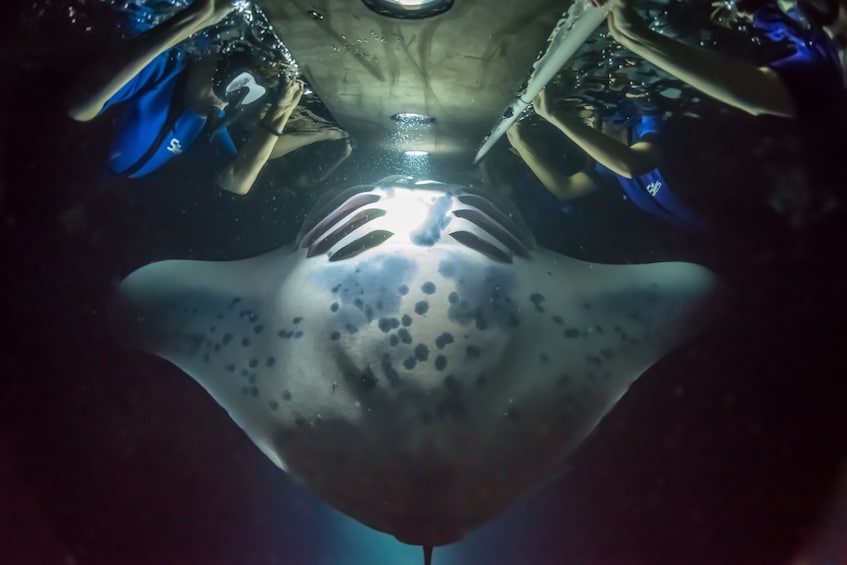Go home and tell your family and friends that you did something they’ll never believe- you participated in a feeding frenzy in the warm waters of the Pacific Ocean in the darkness of night with creatures as large as 16 ft across and weighing 1000 lbs. The Travel Channel named this tour one of the 10 things you must do in your lifetime, and they would be correct. An amazing and unique experience that may only be done at 3 places on the entire planet.
Sea Quest’s check-in and point of departure are just minutes from the Island’s most successful and consistent manta ray viewing location. These graceful and glorious giants soar beneath you as you leisurely and safely view them from above, just feet from the boat. A nocturnal ballet you won’t soon forget.
What Will I See While Snorkelling With Manta Rays in Kona
Because we conduct our manta ray snorkel tours at night, there might be less reef activity than during the day and in different areas around the Kona Coast. But with creatures who have a 10-12 foot wingspan swimming and barrel rolling under you, there will be more than enough entertainment!
Manta Rays feed on the phytoplankton who are attracted to light. Our in-water guide will coach you on how to get comfortable holding onto our state of the art floatation device. This device beams light below the water’s surface in order to bring forth the plankton and therefore the manta rays with them.
Multiple mantas may dance around the rocks and reefs at the ocean’s floor– something that will also be illuminated by our light and the light of the world around Keauhou Bay.
Are Manta Rays Dangerous to Snorkel With
The shortest and best answer is, no! Unlike their cousin, the Sting Ray, Manta Rays are gentle giants with no spear-tipped tails, or any threatening body part for that matter. The only thing that we emphasise to ensure the safety of our guests as well as our crew, is that you have prior swimming and snorkelling experience. While we won’t be doing a lot of active swimming once in the water– the basics of knowing how to breathe and maintain a calm while the mantas swim around us are important for their safety and ours.

